Non-Native Hawkweeds
Hieracium, subgenus hieracium
|
||
| Family Name: | Asteraceae family (ass-ter-AY-see-ee) | |
| Common: | Aster, daisy, or sunflower family | |
| Species: | These non-native hawkweed species in Pierce County are classed into two groups listed by subgenus; Meadow subgenus (pilosella), or Wall subgenus (hieracium) | |
| Class: | Both Meadow and Wall hawkweeds are listed as Class B designates and must be controlled. |
| Description: |
Hawkweeds are hairy plants with stalked clusters of yellow flowers consisting of only ray flowers (dandelion-like). Flower heads are joined to the hairy stems by leafy bracts. Wall hawkweeds have basal leaves and stem leaves. Meadow hawkweeds typically have basal leaves, but few to no stem leaves. Basal leaves of most non-native hawkweed usually persist through flowering. |
|
Why are They Noxious Weeds? |
Hawkweeds are invasive and spread readily. They are prolific seed producers and are weedy and capable of hybridizing with native and non-native species. They are aggressive competitors for pasture, range and native plant species. |
| Where Do They Grow? |
Hawkweeds prefer full sun, or partial shade. They infest meadows, roadsides and fields and are especially invasive on poorer acidic soils that are well drained and coarsely textured. They are aggressive competitors for pasture, range and native plant species. |
| Facts: |
Meadow hawkweeds spread by seeds and vegetatively by stolons, rhizomes, and auxiliary buds from root crowns. They also produce viable seed without pollination. The creeping growth of Meadow hawkweeds fills in the gaps between plants and forms mats of rosettes which prevent other plants from establishing seedlings. Non-native hawkweeds in the subgeus Pilosella include: whiplash (Hieracium flagellare), Yellowdevil (H. x floribundum), yellow or meadow (H. caepsitosum), queen-devil (H. glomeratum), pale (H. lactucella), mouseear (h. pilosella), and tall (H. piloselloides). Wall hawkweeds reproduce only by seed. Wall hawkweeds do not have stolons and grow from a single root base. Non-native hawkweeds in the subgenus Hieracium include: European (Hieracium sabaudum), smooth (H. laevigatum), common (H. lachenalii), polar (H. atratum), spotted (H. maculatum), and wall (H. murorum).
|
| Control Options: |
|
| More Information: |
Download our Flyer or visit Washington State Noxious Weed Control Board Here. Photo by Leo Michels
|
| More Pictures: |
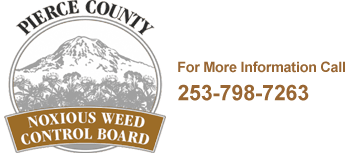

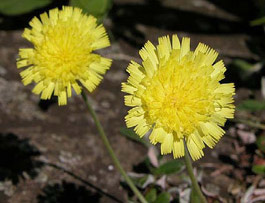
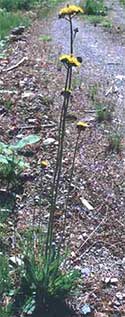
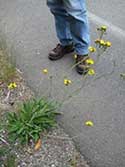

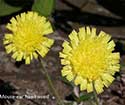
 Pierce County Noxious Weed Control Board • 9200 122nd St E, Puyallup, WA 98373 • 253-798-7263
Pierce County Noxious Weed Control Board • 9200 122nd St E, Puyallup, WA 98373 • 253-798-7263